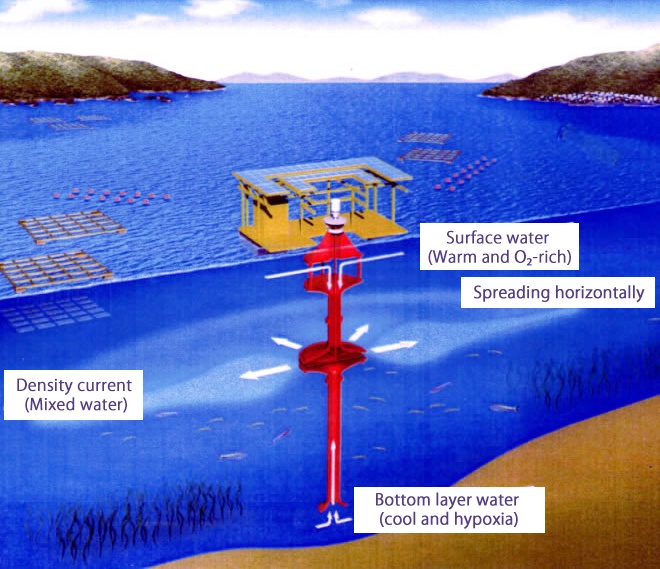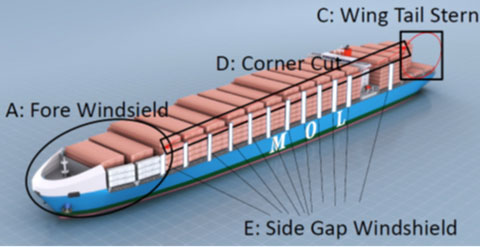Improvement of water quality in closed bays/lakes by using density current
As with the ocean, enclosed coastal bays and inland lakes also create thermal stratification especially in the summer, which almost eliminates the vertical circulation of water. In recent years, a large quantity of nutrients are flowing in from the land and the excessive nutrients lead to water pollution such as hypoxia at the bottom water, red tide and water blooms.
We have developed the Density Current Generator (DCG) by focusing on the “density current,” which is a slow, horizontal flow in stratified waters.
In 1997, we installed an actual DCG unit in Gokasho Bay, Mie Prefecture Japan, and contributed to the improvement of water quality and creating seaweed bed.
We provide consulting services to reduce water pollution caused by excessive nutrients and restore seaweed beds and fishing grounds, by using density current generator to create flow in the sea.


Development of energy-saving technology

Development of a Windshield for a Large Container Ship
The increase in wind resistance is significant in fully loaded large container ships and PCC (Pure Car Carrier) which has a large wind pressure area on the water.
In strong winds, the total resistance can increase by more than 20% in the case of quartering headwinds compared to no wind.
The installation of the windshield at the front of a large containership with a sailing speed of 17 kts is expected to reduce fuel consumption by average 2% per year on the Japan-North America route.
The combined use of wing-shaped stowage in the stern and upper corner cut stowage are also expected to reduce fuel consumption by average 3% per year.
Furthermore, with the development of appropriate side windshields to close the gap between the front and rear of the container, fuel consumption can be reduced by more than average 5% per year.
The system was installed on a 6,700 TEU container ship operated by MOL in 2015. The ship has been in operation since, and the energy-saving effect has been achieved as expected.

S:Standard arrangement
A:Bow Wind Shield
C:Aft Wing Figure Stowage (168TEU decreased)
D:Cutoff Corner (57TEU decreased)
E:Side Gap Windshield

